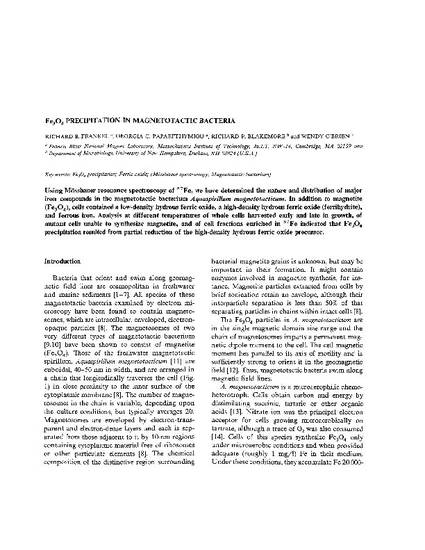
Article
Fe3O4 Precipitation in Magnetotactic Bacteria
Biochimica et Biophysica Acta (BBA)
Publication Date
9-22-1983
Abstract
Using Mössbauer resonance spectroscopy of 57Fe, we have determined the nature and distribution of major iron compounds in the magnetotactic bacterium Aquaspirillum magnetotacticum. In addition to magnetite (Fe3O4), cells contained a low-density hydrous ferric oxide, a high-density hydrous ferric oxide (ferrihydrite), and ferrous iron. Analysis at different temperatures of whole cells harvested early and late in growth, of mutant cells unable to synthesize magnetite, and of cell fractions enriched in 57Fe indicated that Fe3O4 precipitation resulted from partial reduction of the high-density hydrous ferric oxide precursor.
Disciplines
Copyright
1983 Elsevier.
Citation Information
Richard B. Frankel, Georgia C. Papaefthymiou, Richard P. Blakemore and Wendy O'Brien. "Fe3O4 Precipitation in Magnetotactic Bacteria" Biochimica et Biophysica Acta (BBA) Vol. 763 Iss. 2 (1983) p. 147 - 159 Available at: http://works.bepress.com/rfrankel/35/
